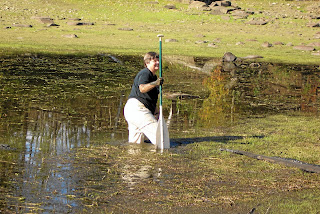It is wonderful to have a baby at Gunflint again. The nursery is not just ready but actually being used.
Believe it or not, there have been other things happening at Gunflint. Last week we had another big windstorm. One large poplar tree landed on four canoes and brushed against Lee and Eva’s house. Usually that pile of canoes goes 2 stacks higher so we were really lucky. Bonnie was also happy that she had put away most of the Kevlar canoes for the winter.

All last week we had wind and rain every day. Sheryl and Bonnie were out on a canoe trip exploring the BWCA during that time. Every day one of us would say, “I sure hope Sheryl and Bonnie are doing okay.” Well, we need not have worried. In spite of wind in their face every day, in spite of rain, in spite of trees down on portages, and in spite of flooded portages, they had a ball. Those of you who talk with them next summer about your canoe trip will really be getting up-to-date information.
On Saturday, we woke up to perfect fall weather. Right now we are in the midst of glorious Indian summer. The wind last week came too early to blow the leaves off the trees. In fact there are still some green leaves on the trees. The peak of fall color is a week or so out. Don’t let that stop you from getting out. It is still wonderful in the woods. This is my absolute favorite time to be out.
Right now for me outside means cleaning up the garden. There are still some green beans to be picked. Broccoli is popping up. Jalapenos are ripening. I have 8-9 pumpkins to bring in to finish changing color. I think the parsley is also slowly growing. The last of the parsley goes into the dehydrator for use all winter long. The sun is out and after lunch I will be too.
Bruce tells me that the partridge hunting is great. Not only is he getting birds but he is also seeing coveys! For the uninitiated, a covey is a family of three or more partridge seen together. We will be eating partridge this winter. They are a little larger than Cornish game hens. If we are trying to watch our diet, Bruce and I can split one for dinner. We rarely do that, preferring to have leftovers for lunch the next day. The traditional Kerfoot partridge dinner is partridge cooked in a Cream of Mushroom soup sauce, wild rice, and baked acorn squash.
With a new healthy grandson (grandchild #7), life is good in the Kerfoot household. We are definitely counting our blessings.


 Even getting Lynn out of the muck proved to be a project. She had nothing solid beneath her legs to push on. No one could get in to help her because they would just sink too. Eventually they cobbled together a log and another canoe to pull her out. Luckily, Lynn is a really good sport.
Even getting Lynn out of the muck proved to be a project. She had nothing solid beneath her legs to push on. No one could get in to help her because they would just sink too. Eventually they cobbled together a log and another canoe to pull her out. Luckily, Lynn is a really good sport.




